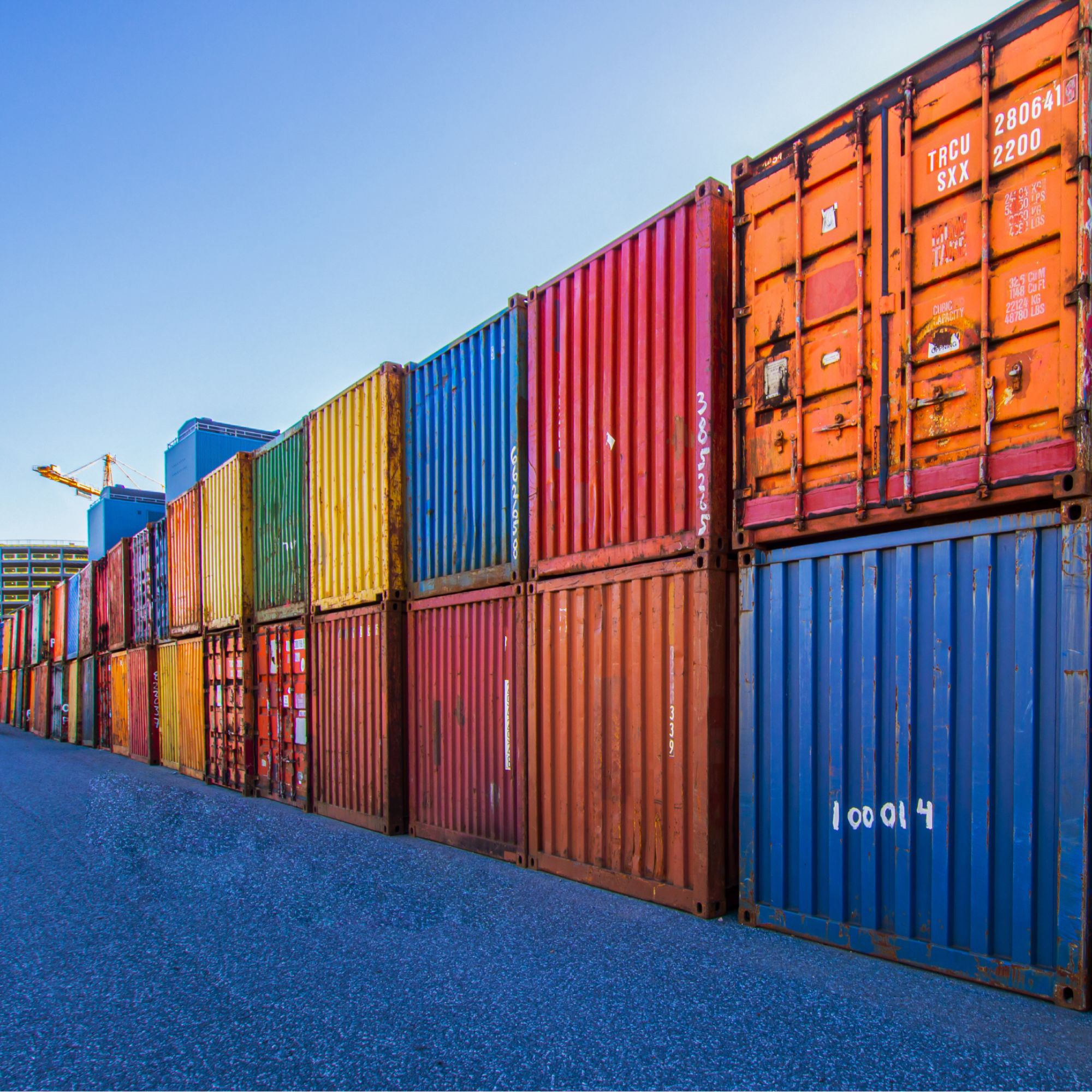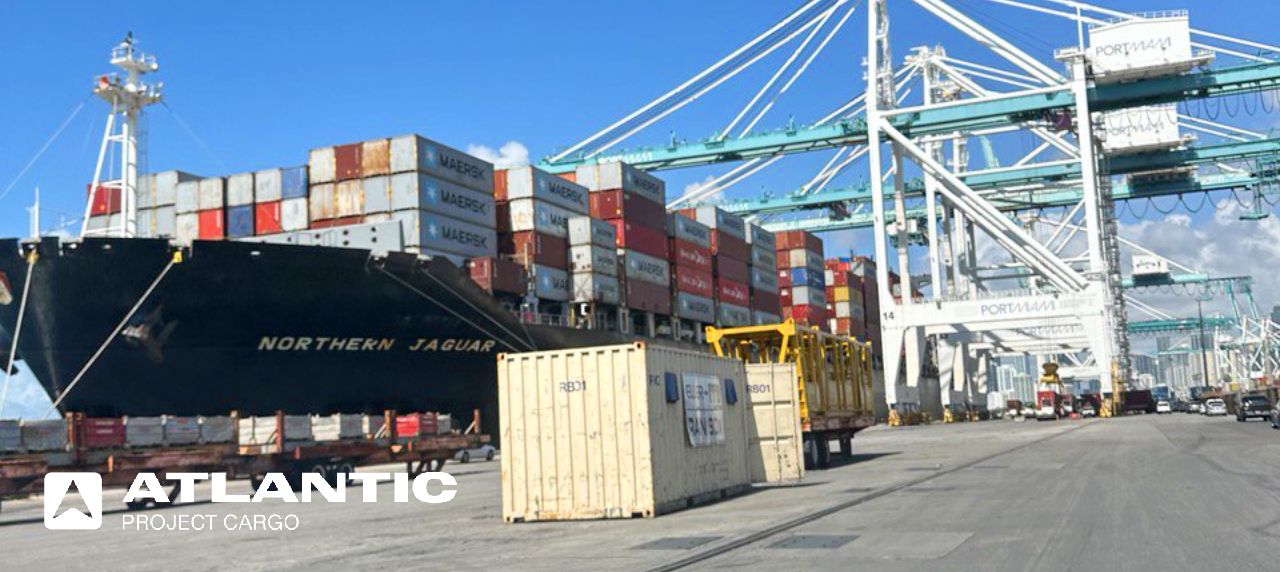
The world of international trade relies heavily on the efficient movement of goods across continents. Container shipping has become the backbone of the global network, offering a secure and standardized way to transport huge quantities of cargo.
This guide will navigate you through the key steps, from selecting the right container to ensuring your shipment clears customs smoothly. By the end, you’ll be equipped with the knowledge to confidently ship your containers internationally.
What is a Container Ship?

Here’s a closer look at the defining characteristics of container ships:
- These vessels are some of the largest man-made mobile structures on Earth, stretching hundreds of meters in length and capable of carrying tens of thousands of containers in a single voyage
The Irina Class currently reigns supreme as the world’s largest class of container ships. This class is spearheaded by the flagship, MSC Irina. As of today, four Irina Class vessels operate under the MSC flag, traversing the route between Europe and East Asia. Two additional ships are currently under construction by China’s Yangzijiang Shipbuilding Group.
The initial Irina Class vessels, delivered in 2023, have impressive dimensions and capacity. Dimensions are 400 meters (1,312 feet) in length and 61.3 meters (201 feet) in width. Each vessel boasts a gross tonnage of 233,328 and a maximum capacity of 24,346 TEU (Twenty-foot Equivalent Units).
- The design of a container ship revolves around its cellular holds – compartments specifically built to house these standardized containers. The holds are designed to maximize capacity, often with multiple tiers stacked on top of each other
- Due to the size and weight of the containers, ships are equipped with massive, specialized cranes for loading and unloading cargo. These cranes operate efficiently, enabling swift turnaround times in ports
- Modern container ships are wonders of modern engineering, employing advanced navigation and communication systems to ensure safe and efficient voyages across big distances
How is Freight Shipped in Containers?
How exactly does freight travel within these steel boxes? Let’s have a look at the general steps:
- Packing and Preparation
The adventure begins at the origin, where the freight is packed into the appropriate container type. This selection depends on the cargo’s characteristics - Sealing and Documentation
Once packed, the container is securely sealed with a tamper-evident seal. This ensures the cargo remains untouched throughout the journey. Additionally, documentation is prepared, detailing the contents, weight, origin, and destination of the shipment - Inland Transportation
The container’s journey typically starts on land. Trucks or trains transport it from the origin facility to the port terminal. This initial destination allows for the consolidation of cargo from various locations before the sea voyage - Port Arrival and Loading
Upon arrival at the port terminal, cranes lift the container and place it onto the designated ship. Standardized size and weight capacity allow for precise stacking within the ship’s cellular holds, maximizing space utilization - The Sea Voyage
The container ship embarks on its journey across the ocean - Offloading and Customs Clearance
Reaching the destination port, the container is unloaded and undergoes customs clearance. This process involves verifying documentation and ensuring compliance with import regulations - Final Delivery
Once cleared by customs, the container is loaded back onto a truck or train for its final destination. This inland journey delivers it to its final destination, where the freight is unpacked and received by the consignee.Containerization offers several advantages over traditional bulk cargo shipping. It streamlines the process, reduces handling costs, and minimizes the risk of damage or loss. The standardized nature of containers allows for easy intermodal transportation, facilitating efficient movement of goods across land and sea
How Much Does Container Shipping Cost?
The efficiency and convenience of containerized shipping come at a price, but how much exactly? Unfortunately, there’s no one-size-fits-all answer when it comes to container shipping costs. According to Drewry’s World Container Index, the average price has raised over 200% per 40ft container this year. The final cost depends on a multitude of factors. Here’s a breakdown of the key elements that influence the price tag:
- Origin and Destination
The distance your cargo travels is a major cost factor. Longer routes across vast oceans naturally cost more than shorter journeys within a region - Container Size and Type
The size and type of container you choose will impact the price. Standard 20-foot containers are generally cheaper than larger 40-foot options. Specialized containers like reefers, with their climate-control systems, also incur a higher cost - Route Availability and Demand
The popularity of a particular shipping route can influence pricing. Additionally, some routes are not available like the Red Sea nowadays - Ocean Carriers and Competition
The specific ocean carrier you choose can affect the price. Different carriers offer varying rates, so looking around can help you find the most competitive quote - Inland Transportation Costs
The cost of moving your container to and from the port needs to be factored in. This includes trucking or train transportation expenses - Terminal Fees
Ports charge various fees for container handling, terminal storage, and security checks. These can add to the overall cost - Customs Clearance
Customs processing can incur additional fees depending on the complexity of your cargo and the destination country’s regulations
Finding the Right Price
Given these variables, securing the most cost-effective container shipping rate requires careful planning and research. Here are some tips:
- Get Quotes
Obtain quotes from multiple ocean carriers to compare rates and find the best deal. Or you canget a quotefrom Atlantic Project Cargo, we will find the best price that will match your needs - Consider Consolidation
If you have smaller shipments, consider consolidating them into a single container to reduce costs per unit - Plan Ahead
Booking your container well in advance, especially during peak seasons, can help you secure better rates - Understand Inclusions
Ensure your quotes include all applicable fees, including terminal charges and customs clearance costs (if possible)
Shipping Container Documentation
Paperwork serves several purposes: providing vital information about the shipment, facilitating customs clearance, and ensuring security throughout the journey. Here’s a breakdown of the key documents required for container shipping:
- Bill of Lading (B/L)
Considered the primary document in container shipping, the Bill of Lading acts as a receipt for the cargo and a contract of carriage between the shipper and the carrier (shipping line). It details information like the shipper, consignee, type and quantity of goods, origin and destination ports, and freight charges. There are different types of B/Ls, each serving specific purposes - Commercial Invoice
This document serves as a detailed breakdown of the commercial value of the goods being shipped. It includes information like the product description, unit price, total value, and currency used. This invoice is crucial for customs authorities to assess any applicable duties or taxes - Packing List
Providing a detailed inventory of the container’s contents, the packing list facilitates customs clearance and helps ensure all items arrive at their destination. It typically includes information like item descriptions, quantities, weights, and box numbers (if applicable) - Certificate of Origin
This document verifies the country where the goods were manufactured or substantially transformed. It may be required by the destination country to determine import eligibility or duty rates - Export Declaration/Import Declaration
These documents act as official notifications to the relevant customs authorities about the intended movement of goods across borders. They typically include details about the shipment, its value, and any applicable permits or licenses - Additional Documents
Depending on the specific cargo and destination country, additional documents may be required. These could include certificates of conformity, phytosanitary certificates (for agricultural products), or fumigation certificates (for pest control). - Maintaining Accuracy
The accuracy and completeness of these documents is important. Any differences can lead to delays, additional costs, or even the seizure of cargo by customs authorities. It’s crucial to ensure all information aligns perfectly across the different documents - Electronic Revolution
The world of shipping documentation is increasingly embracing digital solutions. Electronic versions of these documents, often facilitated by online platforms, are streamlining processes and enhancing efficiency. However, paper documentation remains widely accepted, and understanding both formats is crucial for navigating the world of container shipping
Don’t let paperwork slow down your international shipment! Atlantic Project Cargo takes the hassle out of customs clearance by handling all your documentation needs. Our team ensures accuracy and completeness across all documents to avoid delays or complications. We understand both electronic and paper formats to navigate any situation.
How to Choose the Right Container for Shipping?

While the right container itself won’t solely guarantee smooth customs clearance, choosing the appropriate one can definitely help avoid delays caused by size or weight restrictions. Here’s what to consider for a customs-friendly container selection:
- Shipment Volume and Weight
This is the most crucial factor. Select a container size that fits your cargo comfortably without exceeding the weight limit. Overstuffed containers might be flagged for inspection, and exceeding weight limits can lead to fines - Container Type
There are various container types for different cargo needs. Dry containers are standard for general goods, and reefers for perishables. Open-top containers are useful for oversized cargo, but ensure proper securing to meet customs regulations - Destination Country Regulations
Some countries have specific regulations on container types allowed for certain goods. Research any restrictions on used containers, fumigation requirements for wooden containers, or special permits for hazardous materials - Considering Customs Seals
Tamper-evident customs seals are often used to deter tampering during transit. Using a high-security seal displays extra caution and might expedite clearance
Remember, smooth customs clearance hinges more on accurate and complete paperwork than the container itself. However, choosing the right container eliminates potential red flags related to size, weight, or type, streamlining the process.
For a more secure and efficient clearance, consider consulting the experts of Atlantic Project Cargo. They can advise on the best container type for your specific cargo and destination, ensuring it meets all customs requirements.
Conclusion
In conclusion, navigating international container shipping requires careful planning and attention to detail. By understanding the process, from selecting the right container to ensuring proper documentation, you can ensure a smooth and efficient journey for your cargo. Remember to consider factors like container size, type, and destination country regulations to avoid delays at customs.
Consulting with experts like Atlantic Project Cargo can provide valuable guidance throughout the process. With proper planning and knowledge, you can successfully navigate the world of international container shipping.
Read More



